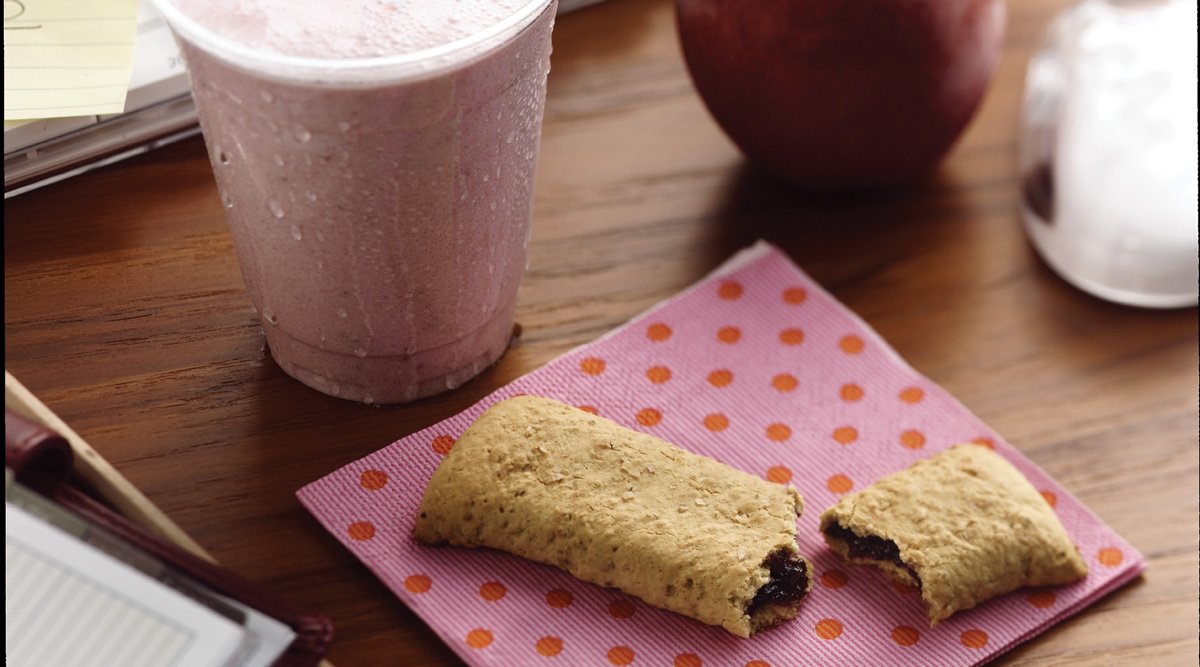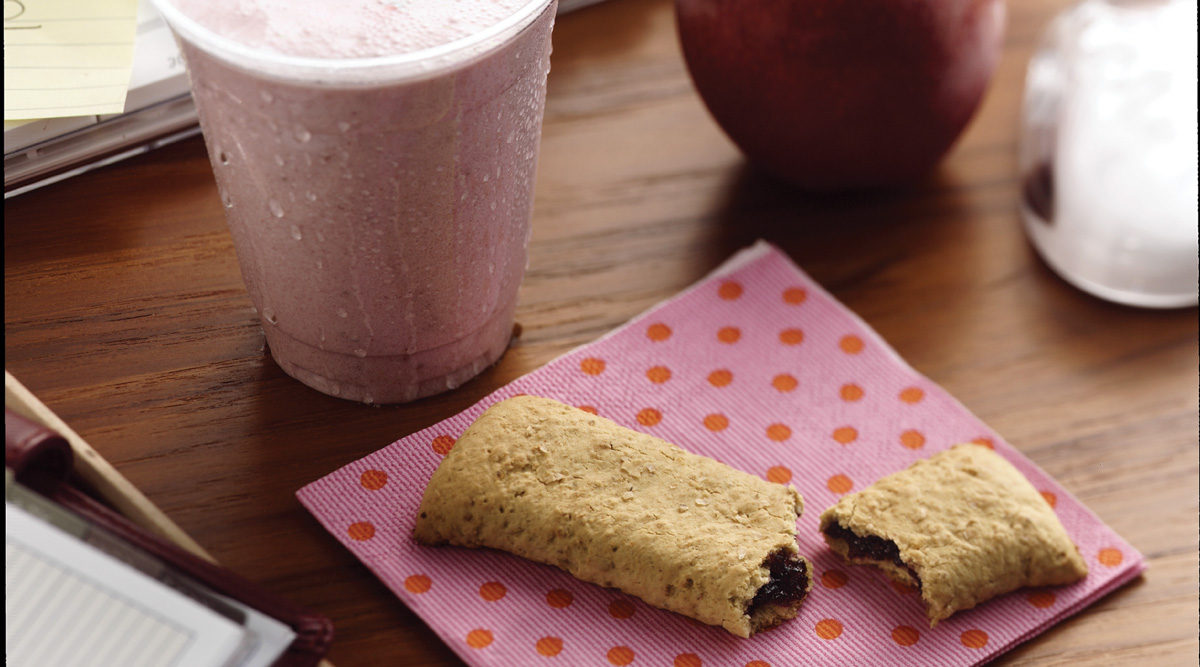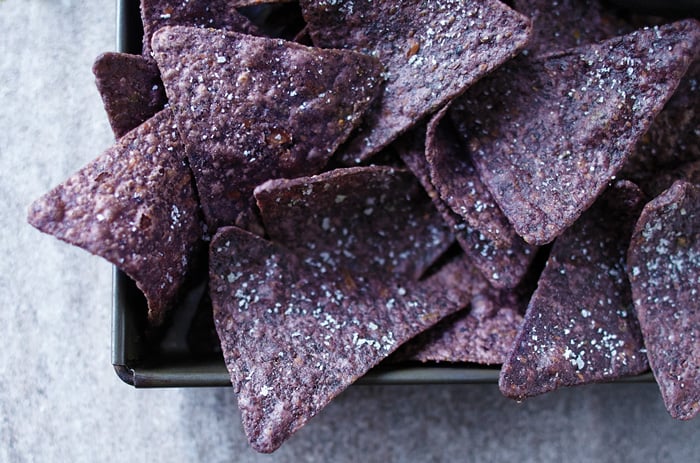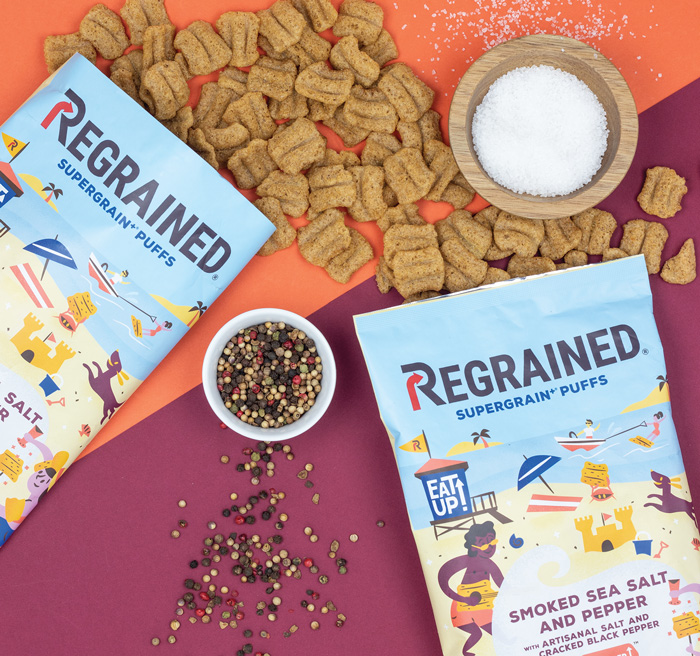Snacking Evolution
NUTRACEUTICALS
Midmorning breaks, afternoon pick-me-ups, late-night munchies … today’s snacks do more than satisfy sweet or salty cravings throughout the day. Consumers look for snacks that are healthy and nutrient-dense or that offer some nutritional benefit. According to SNAC International, an international trade association of the global snack industry, snacks are increasingly considered “mini meals” that can provide essential vitamins, minerals, and nutrients between larger eating occasions.
In August, SNAC International testified at the final public meeting of the 2020–2025 Dietary Guidelines for Americans Advisory Committee on the positive role snacking can play as part of a healthy dietary pattern. The association also submitted detailed written comments to the U.S. Department of Agriculture and the U.S. Department of Health and Human Services, highlighting key aspects to consider on the importance of snacking as part of a healthy, balanced diet: “For children, snacks can be an important vehicle to both facilitate nutrient intake and promote intake from under-consumed food groups. For adults, eating patterns that include snacks, despite being varied in food type, play a role in weight reduction and maintenance. For older adults, especially those in assisted living or nursing home situations, high-protein snacks spaced throughout the day are highly recommended” (SNAC International 2020).
Cargill recently released a report, Snacking Solutions, which discusses how snacks will be at the forefront of products with functional benefits (Cargill 2020). “Our research suggests that consumers are looking for snacks that provide real health benefits, especially parents purchasing snacks for their children. As snacks replace traditional meals, consumers are embracing options that have clear nutritional value—things like protein, whole grains, and fiber,” says Pam Stauffer, global marketing programs manager, Cargill. “While a few years ago, interest in products with health benefits was limited to snack bars, that’s not the case today. We found consumers wanted nutritional benefits in salty snacks and increasingly, baked goods too.”
The COVID pandemic has also heightened the desire for healthy snacks. “Consumers have become more in tune with the importance of health and wellness this year because of the COVID-19 pandemic. We anticipate this trend fueling growth in the better-for-you snack category,” observes Brad Schwan, vice president, category marketing, ADM. “Recent ADM OutsideVoice research shows that 77% of consumers intend to make more attempts to stay healthy beyond the COVID-19 pandemic. They are steering toward clean, healthy products to boost immune function, digestion, protein levels, and more.”
Because of consumer demand for healthy snacks, ingredients need to deliver on nutrition. “Some of the top trends in snacking include sustainable, close-to-nature products; low sugar options; and colors and flavors free from additives,” says Schwan. “Consumers also expect more from their snack foods, fueling the demand for snacks with functional health benefits like added fiber, plant-based proteins, and probiotics in convenient formats such as bars or puffed snacks.”
Here is a look at some of the ingredients trending in snack foods.
Dietary Fiber
“The overall trends in snacking, even before the onslaught of COVID, have been toward ‘healthy indulgence’ in consumers’ snacking choices. This means consumers want their snacks to be tasty while providing nutritional or health benefits. This includes, for example, increased fiber intake, improved blood glucose levels, digestive health support, and weight management,” observes Kyle Krause, product manager, functional fiber and carbohydrates, North America, BENEO. “These trends have been heightened in light of COVID. One reason for this might be that scientific studies have shown that the risk of a severe progression of disease is increased if people suffer from comorbidities such as diabetes, elevated blood pressure, cardiovascular disease, overweight, and other diet-related conditions.”
Dietary fiber can help contribute to the healthfulness of snack foods as it offers nutritional benefits for heart health (can help lower cholesterol), weight management (satiety), digestive health, and blood sugar management. Ingredient suppliers offer various types of dietary fiber that offer some of these benefits as well as contributing to the functionality in snack foods.
BENEO, for example, offers chicory root fibers: Orafti inulin, Orafti oligofructose, and Orafti Synergy1 (combination of inulin and oligofructose). As prebiotics, they stimulate the growth of beneficial bifidobacteria in the digestive system. They have also been shown to support weight management and help the body absorb more calcium. While Orafti Inulin boasts texturizing properties, Orafti oligofructose offers high solubility and a natural sweetness. BENEO recently added Orafti organic to its chicory root fiber portfolio. Available to customers in October 2020, Orafti organic enables manufacturers to add natural prebiotic fibers that will improve taste and texture, while also allowing for fat and sugar reduction in products across key applications such as snacks, bars, bakery, and confectionery.
ADM offers Fibersol, a digestion-resistant maltodextrin. “Our Fibersol line of dietary fiber ingredients can provide an increased feeling of satiety, promote digestive regularity, and reduce blood glucose following a meal,” says Schwan. “We’ve found it works well in virtually any application, as it is heat, acid, shear and freeze-thaw stable, requiring minimal formulation and process adjustments. It’s shown to replace bulk lost due to sugar reduction and can help maintain crisp texture, extending the shelf life of crispy snack foods.”
Cargill offers Oliggo-Fiber chicory root fiber, which can boost fiber content in bakery and snack applications. “It serves as an excellent bulking agent, and as a nondigestible dietary fiber, it adds bulk with fewer calories than other fully digestible carbohydrates,” says Tim Christensen, certified master baker, R&D bakery applications, Cargill. “Beyond fiber fortification, chicory root fiber can be used to assist with sugar reduction in applications such as cakes and cookies, often in combination with Cargill’s ViaTech stevia leaf extract and Zerose erythritol.”
In the past year, Ingredion added two new ingredient solutions to its nutritional portfolio. “Under our resistant starch solutions, we added NOVOLOSE 3490 dietary fiber, a tapioca-based resistant starch. It has a high total dietary fiber content with a minimum of 85% on a dry basis, is process tolerant with no or minimal impact to the sensory eating experience, and is certified low FODMAP by Monash University,” says Ricardo Rodriguez, marketing manager, confectionery & bakery, Ingredion. Applications include breads, tortillas, pasta, cookies, cereals, and bars. The second addition, VERSAFIBE 285 is a soluble corn fiber resistant maltodextrin. It also has a high total dietary fiber content with a minimum of 85% on a dry basis. “It’s easy to handle, process tolerant with minimal impact to the sensory experience, is non-GMO, and is mainly used in bar type applications, says Rodriguez.
Plant Protein
“We’re seeing plant-based diets on the rise, with our research finding more than 70% of consumers rating protein from plant sources as healthy,” says Schwan with ADM. Plant-based protein, particularly from sources such as pea, soy, and pulses are finding their way into snacks. In addition to increased plant-based eating, these ingredients also meet clean label and sustainability trends.
ADM’s Arcon T textured pea proteins can help improve the texture and density of baked snack products while also boosting protein levels. “We offer two forms of Arcon T textured pea protein–one that is a blend of pea protein and chickpea protein and another that blends pea protein and navy beans. Both blends have minimal impact on color and flavor, are not recognized as allergens, and are suited for clean label product positioning,” explains Schwan.
Cargill has used its plant-based proteins to create indulgent, protein-fortified snacks. “We’ve created great-tasting muffins packed with 5 g of protein, using PURIS pea protein, and indulgent cookie prototypes using pea and soy proteins, to appeal to consumers interested in more nutrient-dense snacks,” says Christensen. “The challenge is boosting the protein level, without sacrificing taste and texture. Fortunately, today’s improved plant proteins offer neutral flavor profiles and improved functionality. PURIS pea protein, for example, comes from pea seed varieties specially selected to minimize the off-flavors normally attributed to pulses.”
“Pulse-based plant proteins boost the nutritional profile of formulations, replace major allergens, and also help support popular label claims such as non-GMO, plant-based, vegan, and gluten-free,” adds Rodriguez at Ingredion. Ingredion offers a wide range of pulse-based ingredient solutions, including HOMECRAFT pulse flours and VITESSENCE plant-protein concentrate and isolates. The pulse bases include peas, lentils, faba beans, and chickpeas.
Lentils, Nuts, and Grains
Whole food, clean label, simple, natural ingredients … these are all growing attributes in healthy snacks.
Seapoint Farms, for example, launched Mighty Lil’ Lentils this past summer, highlighting plant-based eating as well as wholesome nutritious snacks. The crispy lentils offer 5 g plant protein per serving as well as other vitamins and fiber naturally inherent in lentils.
Nuts like almonds and pistachios are popular as stand-alone snacks as well as an ingredient in snack foods. Almonds are an excellent source of vitamin E, magnesium, and manganese, and a good source of fiber, copper, phosphorous, and riboflavin. Dikariyanto et al. (2020) recently demonstrated that whole almonds consumed as snacks markedly improved endothelial function, in addition to lowering low-density lipoprotein cholesterol in adults (aged 30–70 yr) with above-average risk of cardiovascular disease. In a 6 wk trial at Kings College in London, 107 British adults between the ages of 30 and 70, all with above average cardiovascular disease risk, consumed almonds or a calorie-matched control snack providing 20% of each participant’s estimated daily energy needs.
Pistachios are a good source of fiber and vitamin B6 and are a complete protein, containing all nine of the essential amino acids. Rock et al. (2020) showed that regular consumption of pistachios was associated with a comparable degree of weight loss, similar reductions in body mass index (BMI) and waist circumference, and favorable changes in the diet in overweight/obese men and women compared with control. One hundred nondiabetic overweight/obese adults were assigned to a 4 mo behavioral weight loss intervention-only group (controls) or also prescribed 1.5 oz/day (42 g/day) of pistachios (pistachio group). Weight loss, BMI, and waist circumference were reduced in both groups, but the pistachio group also exhibited a significant reduction in both systolic and diastolic blood pressure. In addition, plasma alpha-carotene, beta-carotene, and lutein concentrations increased significantly in the pistachio group, and pistachio consumption was associated with increased dietary fiber intake and decreased consumption of sweets.
Whole foods, like lentils and nuts, and whole grains offer a wholesome, familiar source of nutrition in snacks. “According to the 2020 Food and Health Survey from IFIC, nearly 80% of consumers perceive whole grains as healthful, edging all other food groups and nutrients listed except fiber (slightly over 80%),” says Kelly Toups, director of nutrition, Oldways Whole Grains Council. “Further, fiber, whole grains, and protein from plant sources were found to be the most sought-after foods/nutrients by consumers.”
Regarding snacks, Toups notes that the Whole Grains Council has been seeing lots of whole grain tortilla chips (whole grain corn), granolas (oats), and popcorn products (corn) in creative flavor combinations. “Some fun examples include golden chai–flavored granola, pumpkin pie–flavored popcorn, and Korean barbeque–flavored tortilla chips.” She adds that in the period from 2016 to 2019, they have observed an increase in the proportion of products with the Whole Grain Stamp that include the ancient grains quinoa or sorghum, as well as an increase in sprouted grain ingredients. “We definitely see ancient grains sneaking their way into all sorts of whole grain snack foods that they have not been used in before. However, the ancient grains do not tend to be the star player, as they are often further down the ingredient list. There still hasn’t been a significant move away from the tried-and-true oats, whole wheat, corn, and brown rice.”
Upcycled Foods
Within the sustainability arena, upcycling is gaining momentum as it helps reduce food waste. The Upcycled Foods Association states that “upcycled foods use ingredients that otherwise would not have gone to human consumption, are procured and produced using verifiable supply chains, and have a positive impact on the environment.
ReGrained Puffs are an example of the upcycling movement. The snack is made with SuperGrain+, ReGrained’s flagship upcycled ingredient. It is created using the company’s patented process to transform spent brewers grain into a nutritious, versatile, and functional ingredient. ReGrained sells SuperGrain+ through business-to-business partnerships and showcases it with its own branded product lines, like ReGrained Puffs. Using twin-screw extrusion, a blend of SuperGrain+ and non-GMO organic corn is expanded and dried. The result is a certified organic crunchy savory snack with 100 cal per serving, 0 g saturated and trans fats, and a good source of fiber.
“The upcycling story has really resonated with consumers,” notes Hannah Ackerman, corporate communications manager, Comet Bio. “We recently performed a consumer research study that found that 42% of consumers believe that reducing food waste is a reason to purchase healthy and sustainable products.” Comet Bio offers a prebiotic dietary fiber, Arrabina, upcycled from wheat stalks that are left over after harvest. “Our upcycled arabinoxylan plant fiber extract is clinically proven to promote the growth of bifidobacteria, help maintain healthy blood glucose levels, and support a healthy immune system,” says Ackerman. For snacks, Arrabina can be used in nutrition bars and shakes, sweet bakery products like brownies, and extruded snacks.
Innovative Ideas
As healthy snacking evolves, ingredient companies continue to drive innovation with new ingredients as well as thinking outside the box in formulations. ADM recently introduced hemp hearts (hulled hemp) and hemp powders (at 50% and 33% protein levels) that offer multiple benefits as a source of fiber, plant protein, and omega-3 and omega-6 fatty acids. “Hemp performs well in a wide variety of snacks and baked goods, from muffins and loaf breads to snack bars and cereals. We find that hemp is most successful in formulations combined with other whole grains to achieve the texture, taste, and nutritional value in products consumers are looking for,” says Schwan.
ADM also recently introduced a postbiotic with nonviable microbes or microbe metabolites that may have similar benefits to probiotics but which can be used in a wider array of food and beverage applications. Schwan explains that because they don’t contain living microorganisms, postbiotics are tolerant to heat and moisture and are better suited for baked goods and snack products. “Our new HT-BPL1, a postbiotic made from heat treating the probiotic BPL1, targets metabolic health and makes it possible to add functional health benefits to a vast range of snack products.”
Christensen from Cargill notes that protein- or fiber-fortified compound chocolate coatings and inclusions offer another avenue to nutritional enrichment. “Inclusions are perfect for use inside baked goods such as cookies and muffins, while coatings can be used for bottoming, enrobing, or drizzling on snack bars, pretzels, and more.” He also states that there is an opportunity to introduce plant sterols, which have been shown to lower cholesterol, into bakery and snack products. “Cargill’s CoroWise plant sterols can be used by snack manufacturers to deliver great-tasting products without impacting taste and texture. We’ve incorporated plant sterols into a range of snacks and baked goods, including muffins, cookies, whole wheat bread, and nutrition bars, often in combination with chicory root fiber for a further nutritional boost.”
REFERENCES
Cargill. 2020. “Snacking Solutions: Understanding the Modern Snack-Food Consumer.” Proprietary research.
Dikariyanto, V., L. Smith, L. Francis, et al. 2020. “Snacking on Whole Almonds for 6 weeks Improves Endothelial Function and Lowers LDL Cholesterol but Does not Affect Liver Fat and Other Cardiometabolic Risk Factors in Healthy Adults: The ATTIS Study, a Randomized Controlled Trial.” Am. J. Clin. Nutr. 111(6): 1178–89.
Rock, C. L., E. Zunshine, T. H. T. Nguyen, et al. 2020. “Effects of Pistachio Consumption in a Behavioral Weight Loss Intervention on Weight Change, Cardiometabolic Factors, and Dietary Intake,” Nutrients 12(7): 2155.
SNAC International. 2020. “SNAC International Testifies on Role of Snacking as Part of Healthy Diet.” Press release, Aug. 13. SNAC International, Arlington, Va.










